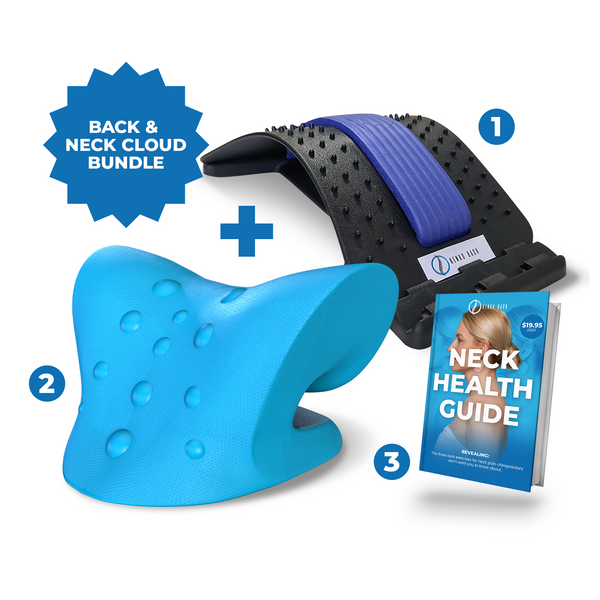Neck Pain in the Workplace: Determining Risk Aspects and Applying Ergonomic Solutions
Neck pain in the workplace is a prevalent problem that can affect employee health and performance. By comprehending the different danger factors adding to neck discomfort and executing ergonomic solutions, organizations can develop a more conducive job setting.
Common Root Causes Of Neck Discomfort
Neck discomfort in the workplace is a common problem that can be connected to several common reasons. Furthermore, recurring motions such as frequent bending, turning, or getting to can additionally contribute to neck pain over time.

Ergonomic Risk Variables
Poor comfort designs in the work environment can dramatically add to neck discomfort amongst employees. Factors such as inappropriate workdesk height, poor chair support, and awkward positioning of computer monitors can all contribute in the advancement of neck discomfort. When staff members are required to rest for prolonged periods in settings that stress their neck muscle mass, it can cause stiffness, soreness, and even extra major musculoskeletal issues in time.
Furthermore, inadequate ergonomic techniques can cause workers taking on uncomfortable poses while functioning, such as craning their necks to see a computer system display or reaching annoyingly for a computer mouse or keyboard. neck cloud. These abnormal placements and repetitive movements can put unnecessary anxiety on the neck and surrounding muscular tissues, leading to pain and lowered efficiency

Desk Configuration Recommendations
To reduce the risk of neck discomfort and pain, there are numerous workdesk arrangement recommendations that employees must think about. Ensure that the computer screen is placed at eye level to avoid straining the neck by looking up or down.
It is likewise vital to have appropriate lighting to minimize eye stress, as scrunching up your eyes or leaning ahead can cause neck stress. Arrange the workdesk layout to keep regularly used products within arm's reach, restricting the requirement for repeated turning or getting to movements. By implementing these desk arrangement suggestions, workers can develop a more ergonomic office that sustains neck health and wellness and decreases the threat of developing work-related neck pain.
Stretching and Exercise Tips
To maintain adaptability and minimize muscle mass stress in the workplace, integrating extending and workout routines can be advantageous for total health and efficiency. Straightforward desk-friendly stretches can aid alleviate neck discomfort and avoid rigidity. Neck rolls, shoulder shrugs, and mild side-to-side neck stretches work in alleviating tension. Furthermore, including workouts like chin tucks, shoulder blade presses, and top back stretches can help reinforce muscles that sustain great stance.
Establishing pointers or utilizing apps that motivate movement can aid establish a normal stretching regimen. By prioritizing these tasks, you can boost your physical wellness, minimize the danger right here of neck discomfort, and enhance your total performance in the office.
Relevance of Routine Breaks
In a hectic workplace where demands can add to physical stress like neck pain, establishing a routine that emphasizes the importance of regular breaks is paramount (neck cloud). Taking routine breaks throughout the workday is necessary for protecting against and reducing neck discomfort. Extended periods of resting or repetitive jobs can bring about muscle mass tension and rigidity in the neck and shoulders. By integrating brief breaks into the job regular, employees can decrease the risk of establishing neck discomfort and enhance overall convenience and efficiency.
Regular breaks enable employees to relax their muscular tissues, stretch, and change positions, protecting against rigidity and advertising better circulation. Motivating workers to take quick breaks every 30-60 Look At This mins can help in reducing the build-up of tension in the neck and shoulders. These breaks can additionally work as a possibility for workers to practice leisure strategies or gentle neck stretches, further advertising musculoskeletal wellness. Applying a society that values and prioritizes regular breaks can have a significant effect on lowering neck discomfort and boosting total wellness in the office.
Final Thought
In verdict, attending to ergonomic threat variables and applying proper workstation setups are crucial in lowering neck discomfort in the work environment. By advertising excellent position, giving sufficient support, and motivating routine breaks and stretches, companies can produce a healthier and a lot more efficient job environment for workers. Prioritizing employee health via ergonomic services is crucial to avoid discomfort and enhancing general work environment contentment.
Neck pain in the office is a widespread problem that can impact worker well-being and productivity. By identifying and resolving these common reasons of neck discomfort in the work environment, employers can take aggressive actions to create a additional info much more ergonomic and comfy work setting for their workers.
Poor ergonomics in the work environment can considerably contribute to neck discomfort amongst employees. By carrying out these workdesk configuration referrals, workers can develop a more ergonomic work space that supports neck health and lowers the danger of creating work-related neck discomfort.
Neck rolls, shoulder shrugs, and mild side-to-side neck stretches are effective in relieving tension.